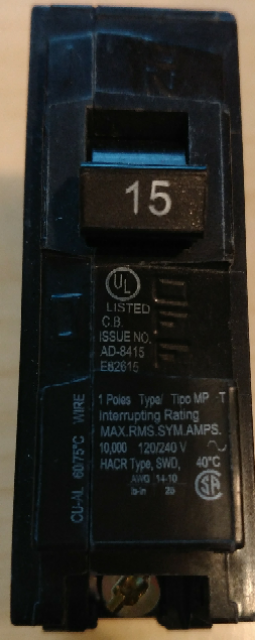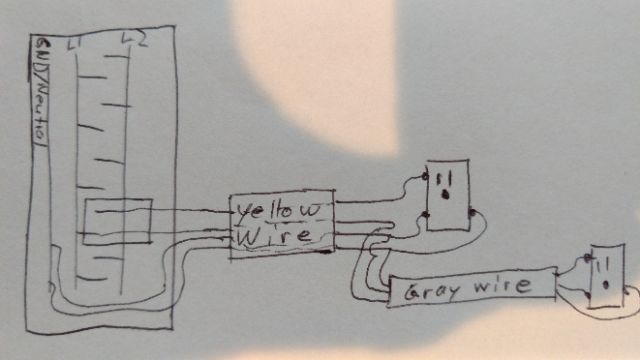I did quite a bit of research including on this forum but wanted to double check if I got things right. On the outside of our home there is a standard electrical box (guessing about 3"x5") to install an outlet. There is no outlet yet but just a cover and inside the box is a 4-wire (3 conductor + ground) 12AWG cable with red, black, white and bare conductors. It was meant to be used for an outside kitchen appliance but then stayed unused. However, I have a need for a 120V (GFCI?) outlet at that position and need to pull 120V to an outside counter top. The pipe from that outlet to the counter top is already in place. All of this is shown in the image below. The electrical box with the yellow wire (3 conductors + ground) and then the pipe with the gray wire that will go into the box.
On the breaker box there is a double 20A breaker. See the second image below.
So the idea is to do a MWBC. I would connect:
- White conductor from yellow cable to white on gray cable + neutral on standard 120V receptacle.
- Bare conductor from yellow cable to bare on gray cable + ground on standard 120V receptacle.
- Red conductor from yellow cable to black on gray cable.
- Black conductor from yellow cable to hot on standard 120V receptacle.
Since the black and red are on different phases I should be able to pull 20V from each without burning up my neutral. Does that plan sound correct and is that up to code?
An alternative I guess would be to replace the double breaker with a single breaker (see bottom image. I guess I could use 20A but going lower doesn't do any harm) and a cover. Then I only have 120V on either the red or black with the other not being connected to anything. The biggest issue I have with this is that it seems I have to take the wire from the current breaker and connect it to the new breaker but I believe there isn't a way to kill power on that wire because it's in the main panel and not a sub panel. Or does the quadruple 200A switch kill power to all the other breakers in the main panel? In any case, the MWBC is preferred if it's up to code.


 [
[ 4
4
Edit: Based on comments I added a drawing if making the change in the service anel. Please see the hand-drawing at the bottom. This is not really want I want to do, i.e. preferably I like to keep the service panel unchanged and just create two 120V outlets from the 240V outlet.
